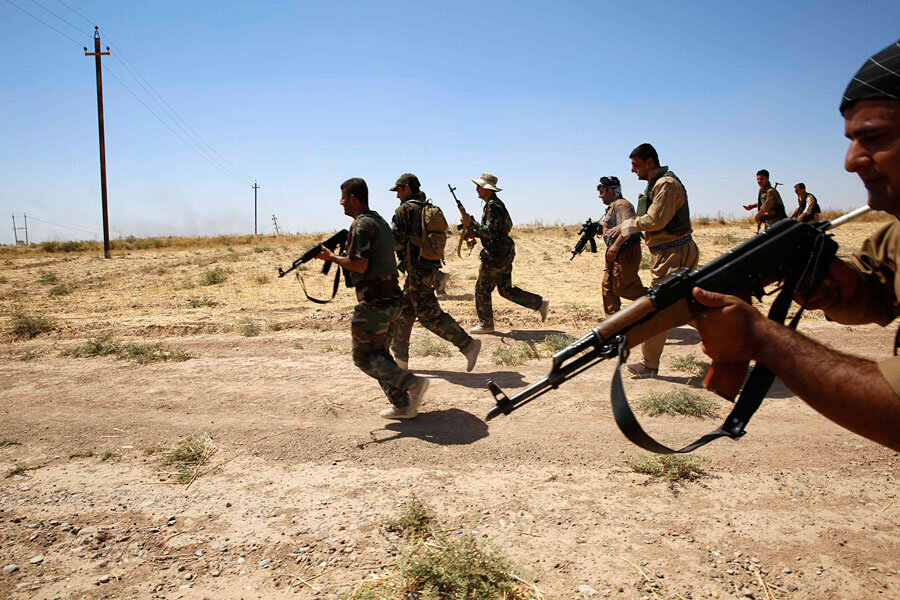How big a threat does Islamic State pose to the US homeland?
Loading...
| Washington
When Defense Secretary Chuck Hagel warned last month that the Islamic State (IS) is an “imminent” threat to the United States, a number of lawmakers and analysts seized upon that claim.
“This is really the first group that has the wherewithal in terms of financing” to potentially strike on US soil, said Sen. Dianne Feinstein (D) of California, who chairs the Senate Intelligence Committee. IS, also called ISIS and ISIL, has “heavy equipment, heavy explosives, the ability to move quickly.”
Indeed, many have argued that IS now represents a far greater prospect of peril to US interests than Al Qaeda does.
But are comparisons to Al Qaeda – the group that attacked on US soil on 9/11 – accurate? How big a threat are IS foreign fighters to the US?
In little-publicized – and rare – public remarks this week, the outgoing director of the National Counterterrorism Center, Matthew Olsen, played down the possibility of an IS attack on the American homeland, insisting that “ISIL is not Al Qaeda pre-9/11.”
As “dire” as the threat from IS has been made to sound in recent weeks, “There is no credible information that ISIL is planning to attack the United States” and “no indication at this point of a cell of foreign fighters operating in the United States – full stop,” he said in remarks Wednesday at the Brookings Institution in Washington.
Still, on advice from its own Joint Terrorism Analysis Centre, Britain recently raised its terror threat level from “substantial” to “severe” – indicating that the risk of an attack on the country from fighters for IS, with British passports, was “highly likely.”
What about this recent development?, Mr. Olsen was asked. It’s more a function of Britain’s “geographic proximity” to the fighting in Middle East, he said.
“The situation is more pronounced in the UK, in terms of foreign fighters traveling to those countries and then returning home,” he said.
The number of foreign fighters with American passports who could return to the US has been the subject of much debate, too, within US intelligence analysis circles. Figures have run the spectrum from several dozen to several hundred.
For his part, Olsen estimates that “over a hundred Americans have traveled to Syria,” but adds, “to be clear, we don’t know how many of those have joined ISIL.”
To that end, Secretary Hagel announced Friday on the heels of NATO meetings that the US would be forming a “multinational task force to share more information about the flow of foreign fighters into Syria and from Syria into Iraq.” He added in his statement that “these foreign fighters represent an acute threat to our NATO allies.”
Among the task force’s activities will be efforts to “stifle ISIL’s source of revenue, including any trade in petroleum products,” with the ultimate goal of establishing a “truly global coalition” to take on IS, Hagel said. “Acting together, with clear objectives and common purpose, we will degrade and destroy ISIL capabilities – and ensure that it can no longer threaten Iraq, the region, and the world.”
In the meantime, Olsen said, the US still regards core Al Qaeda and Al Qaeda in the Arabian Peninsula as the two organizations that most threaten the US, with IS ranking third.
This is because nearly any attack that IS may wage, short of procuring nuclear warheads, “is not a threat to our way of life,” says Stephen Biddle, professor of political science and international affairs at George Washington University. He notes, however, that the likelihood of an IS terrorist strike “is not zero.”
Even in 2001, which was the worst year for terrorist lethality in US history, more Americans died of peptic ulcers, says Professor Biddle. He notes that there hasn’t been a year since 1948 when more Israelis were killed by terrorist attacks than in car crashes.
“The terrorist threat is real,” adds Biddle, who is also an adjunct senior fellow for defense policy at the Council on Foreign Relations in Washington. “But part of the central strategic challenge of dealing with terrorism is making sure that the cure is not worse than the disease.”







